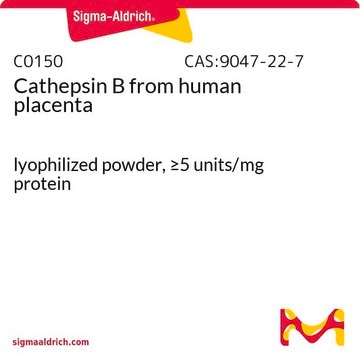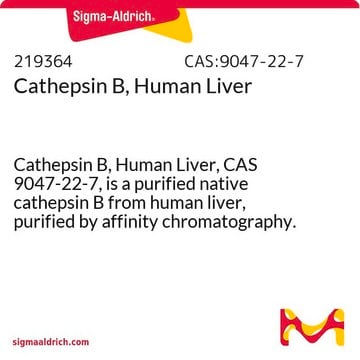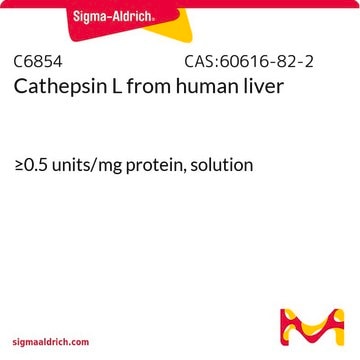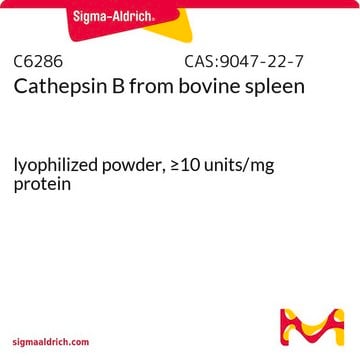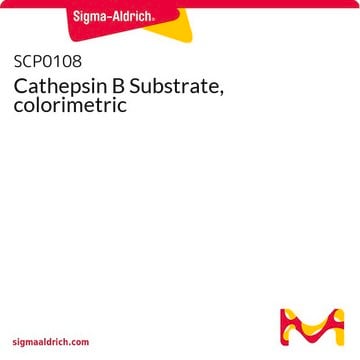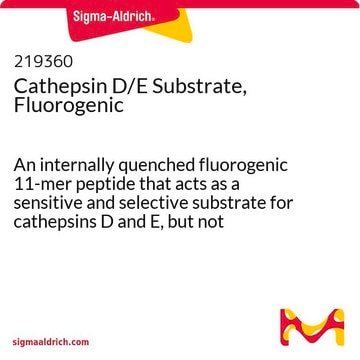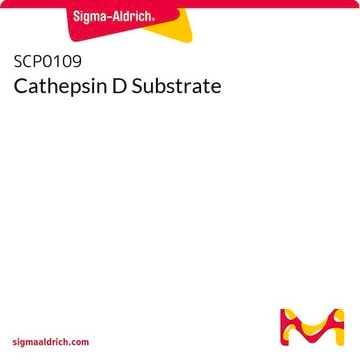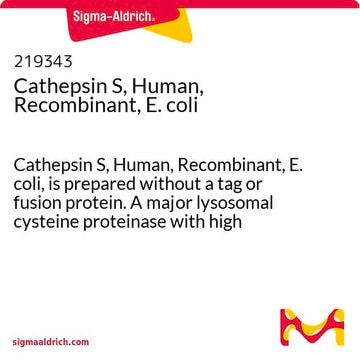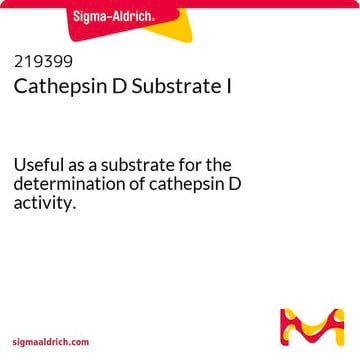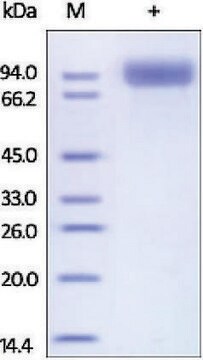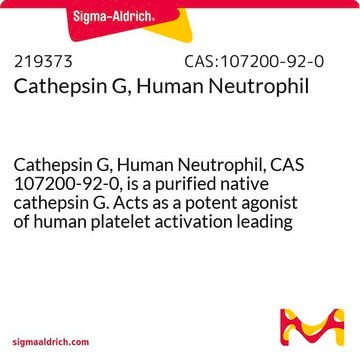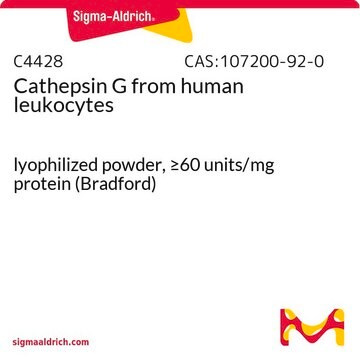This product is shipped at ambient temperature. This material is lyophilized from a solution containing sodium phosphate, pH 6.5. It may be reconstituted in approximately 80 ul water per 25 ug vial. Activation is not necessary.
C8696
Cathepsin D from human liver
lyophilized powder, ≥250 units/mg protein (E1%/280)
Scegli un formato
Scegli un formato
About This Item
Prodotti consigliati
Stato
lyophilized powder
Livello qualitativo
Attività specifica
≥250 units/mg protein (E1%/280)
PM
~45 kDa
Colore
white
N° accesso UniProt
Temperatura di conservazione
−20°C
Informazioni sul gene
human ... CTSD(1509)
Descrizione generale
Applicazioni
Azioni biochim/fisiol
Altre note
Definizione di unità
Stato fisico
Inibitore
Prodotti correlati
Codice della classe di stoccaggio
11 - Combustible Solids
Classe di pericolosità dell'acqua (WGK)
WGK 3
Punto d’infiammabilità (°F)
Not applicable
Punto d’infiammabilità (°C)
Not applicable
Scegli una delle versioni più recenti:
Certificati d'analisi (COA)
Non trovi la versione di tuo interesse?
Se hai bisogno di una versione specifica, puoi cercare il certificato tramite il numero di lotto.
Possiedi già questo prodotto?
I documenti relativi ai prodotti acquistati recentemente sono disponibili nell’Archivio dei documenti.
I clienti hanno visto anche
-
At what temperature is it shipped? How to reconstitute it? Is it active or to be activated?
1 risposta-
Utile?
-
Filtri attivi
Il team dei nostri ricercatori vanta grande esperienza in tutte le aree della ricerca quali Life Science, scienza dei materiali, sintesi chimica, cromatografia, discipline analitiche, ecc..
Contatta l'Assistenza Tecnica.

